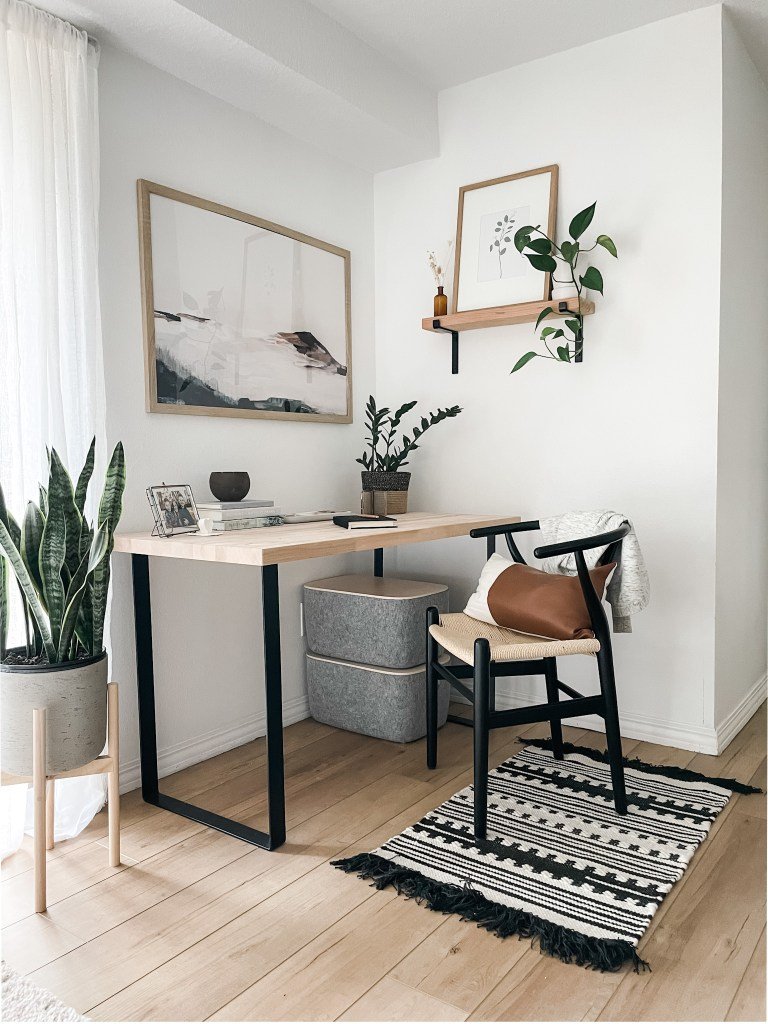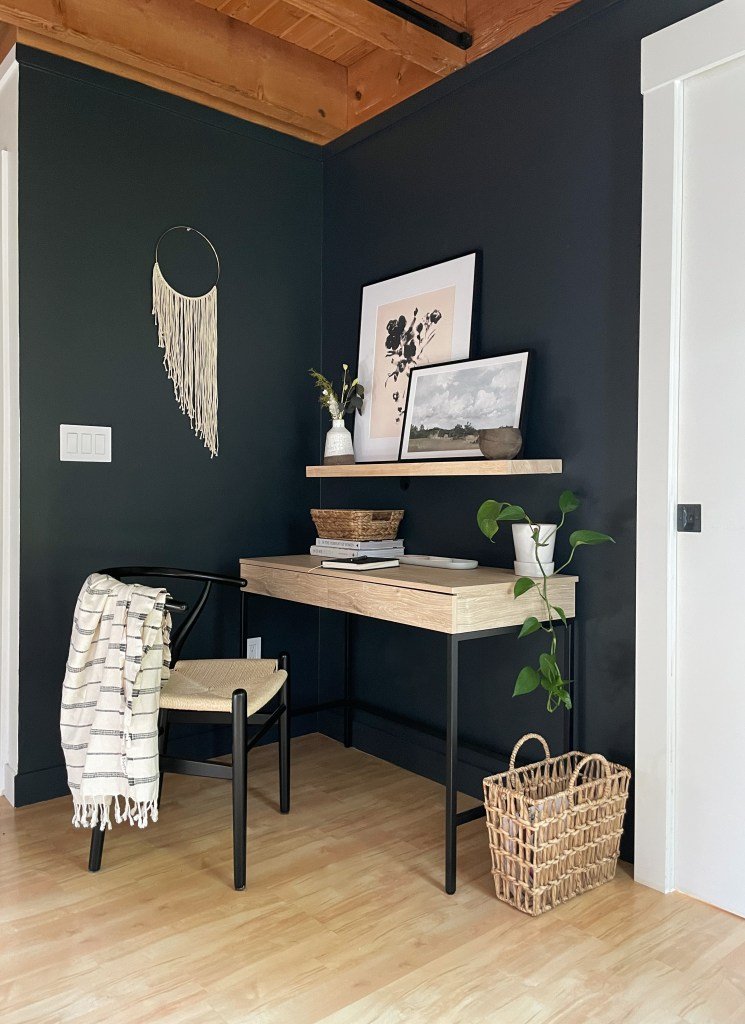Do you find yourself constantly shifting your laptop from one spot to another, searching for the perfect place to work, Zoom, or tackle your to-do list? If that sounds familiar, let me share some creative ideas to help you design a small home office that’s both functional and inspiring!
Over the years, I’ve had plenty of experience working from home in different capacities. From teaching English online to writing engaging content for blogs, brands, and even YouTube scripts, I’ve always needed a functional and comfortable workspace. With every move, I’ve had to rethink and redesign my home office setup, which has taught me a thing or two about creating a space that works. Let me share some of my favorite tips with you!
1. Find a Dedicated Space
A home office doesn’t have to mean sacrificing an entire room—far from it! It can be as simple as claiming a small corner, utilizing that awkward nook you’ve been ignoring, or even transforming a closet into a cozy workspace. Look around your home with fresh eyes. Is there an empty wall in the living room? A wide hallway? Maybe a spot in the kitchen that rarely gets used?
Need inspiration? Check out my post on 15 Small Home Office Ideas for creative ways to design a workspace that fits perfectly into your home, no matter the size or layout.
Once you identify the space, think about how you can make it functional and inviting. Add a small desk, a comfortable chair, and some task lighting. Keep it simple, but make it yours—this will be your spot to focus and thrive. Don’t underestimate how much an intentional workspace can boost your productivity!

2. Define the Space
Now that you’ve selected your perfect spot, it’s time to define it. Creating a clear distinction between your workspace and the rest of your home is key. Without some visual separation, your office area may feel more like an afterthought and could end up cluttered and distracting.
One of my favorite ways to define a space is with paint—it’s easy and budget-friendly! A simple accent wall or even a darker tone around your desk area can help create a sense of purpose. If you’re looking for ideas, I recommend exploring neutral colors that bring warmth and focus to the area.
Here are a few other ways to define your home office:
- Wallpaper: Add some character by accentuating one wall with a bold print or texture.
- Shelving: Floating shelves or a bookshelf not only define the space but also add functional storage.
- Furniture Placement: Arrange your desk and chair in a way that clearly marks the workspace boundary.
- Rugs: A well-placed rug helps ground the area and adds a cozy vibe.
- Artwork: Consider a large statement piece or even a small gallery wall to add personality and focus to the space.
The goal is to make the space feel intentional, so you’re inspired to work there. With the right touches, you can easily transform a corner or nook into your productive home office!

3. Focus on Function
Before diving into design details like rugs, colors, or décor, take a step back and think about how the space will actually function. It’s easy to get caught up in making the space look good, but the true test is whether it works for your daily tasks.





Here are some important functionality considerations:
- Power outlets: Are there outlets nearby to plug in your computer, phone, or any other devices?
- Storage: How will you store office supplies like pens, paper, or files? Consider using drawers or shelving for easy access.
- Reachability: What items do you need within arm’s reach? Think about keeping essentials like your laptop, notebooks, or coffee mug close by.
- Space for accessories: Is there room for other important tools like a printer, backup drive, or filing cabinet?
The goal is to design a space that not only looks great but also supports your workflow. Functionality should always come first—once you’ve nailed that, you can move on to the fun design elements!

4. Soften the Edges
While defining your home office space is important for functionality and focus, it’s just as essential to make the area feel cozy and integrated into the rest of your home. This is where the concept of “softening the edges” comes in. You want the space to feel inviting, not isolated, so it seamlessly blends with the rest of the room.
I love to use a few key decor pieces to achieve this balance:
- Plants: These are a game-changer for softening any space. Place them on the edges of your office area, or even in the corners, to bring life and vibrancy to the room.
- Curtains: While not necessary for every window, curtains can help blur the lines of a corner, creating a softer, more relaxed feel.
- Baskets: I’m a huge fan of baskets—they add texture and warmth to the space. I use them for storage, like keeping decor magazines tucked away, and place them along the edges of the office to maintain that cozy, lived-in vibe.
These simple touches help create a space that feels both functional and inviting, a place you’ll love spending time in. Softening the edges makes all the difference in turning a small office into a comfortable, welcoming part of your home.

5. Streamline Office Decor
When working with a small space, simplicity is key. The goal is to keep things clean, minimal, and functional. Too much furniture or clutter can overwhelm the space and make it feel cramped.
For a small home office, focus on using only the essentials. Opt for sleek, streamlined furniture that serves a clear purpose. For example, choose a compact desk with built-in storage to keep everything organized. Keep the décor simple but purposeful—less is more in this case!
As for the office, I like to start with a practical desk that uses only the amount of space needed. The minimal desk in my bedroom office corner features a couple of drawers and a hidden cord system, which helps tremendously in keeping things neat and tidy.
Remember, in a small space, every piece counts, so make sure each item has a purpose and adds to the overall flow of the room!

Conclusion
To wrap things up, designing a small home office doesn’t have to be complicated. Focus on what you need, define the space thoughtfully, and add touches that make it both functional and cozy. For even more inspiration, check out my 15 Small Home Office Ideas to transform your space into a productive and inviting work area. With these tips, you can create a workspace that feels intentional and helps you stay productive.

